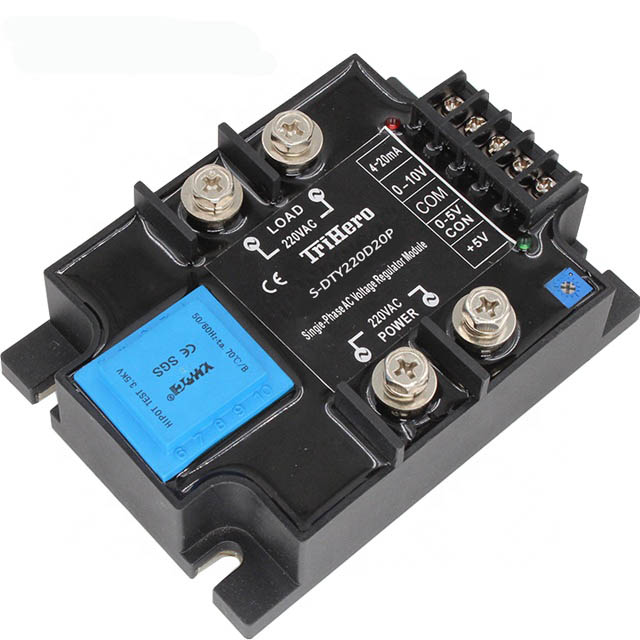Working principle of solid-state voltage regulator
Working principle of solid state voltage regulator:
The adjustment of the AC part uses a phase-shifting method, which is similar to the adjustment method of a desk lamp. In other words, the difference between a solid-state voltage regulator and a solid-state relay is the optocoupler inside. The voltage regulator is equipped with a linear one, while the solid-state relay is It is a switch type. By adjusting the bias voltage, the luminous intensity of the control tube of the optocoupler is changed, thereby changing the equivalent resistance of the high-voltage end to achieve the purpose of controlling the voltage. The solid-state voltage regulator is a synchronous transformer, a phase detection circuit, and a phase-shift trigger. The circuit and the output thyristor are integrated. When the control voltage is changed, the trigger phase angle of the output thyristor can be changed, that is, the voltage regulation of single-phase alternating current can be realized. According to the difference of the output thyristor device, a bidirectional thyristor can be divided into The common type of silicon, the enhanced type of two unidirectional thyristor antiparallel and the half wave type of one unidirectional thyristor. According to the rated voltage of single-phase AC load, it can be divided into two types: 220V and 380V. Mainly used Control temperature, light, voltage, and speed in industrial electric furnaces, electric ovens, lighting, primary voltage regulation of transformers, fans and pumps, torque motors, etc.

Previous article:no more
Next article:no more
